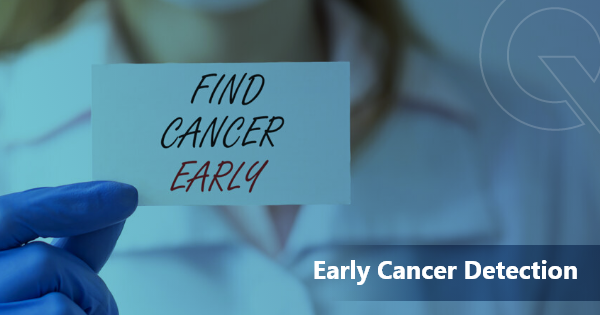Breast cancer is one of the most prevalent forms of cancer affecting women worldwide. Early detection is crucial for successful treatment and improved outcomes. While regular screenings and clinical exams are essential, self-examination at home is a proactive step every woman can take in monitoring her breast health. This guide aims to empower you with the knowledge and techniques necessary to perform breast self-exams effectively. we will delve into the fundamentals of breast anatomy, common signs and symptoms of breast cancer, and the step-by-step process of performing a breast self-examination (BSE). We’ll also provide valuable resources and information on when to seek medical attention, risk reduction strategies, and the importance of regular screenings.
Contents
- 1 Understanding Breast Cancer
- 2 Self Check for Breast Cancer
- 3 Risk Factors for Breast Cancer
- 4 Early Symptoms of Breast Cancer in Females
- 5 Conclusion:
- 6 Frequently Asked Questions (FAQ):
- 6.1 How often should I perform a self-check for breast cancer?
- 6.2 What should I do if I find a lump during a self-check?
- 6.3 Are self-checks reliable for detecting breast cancer?
- 6.4 At what age should I start performing self-checks for breast cancer?
- 6.5 Can men perform self-checks for breast cancer?
Understanding Breast Cancer
Breast cancer is a complex disease that develops when abnormal cells in the breast tissue grow and multiply uncontrollably. It can affect both men and women, although it is much more common in women. To effectively check for breast cancer at home, it’s essential to have a basic understanding of its underlying mechanisms.
Basics of Breast Anatomy
The breast consists of glandular tissue, ducts, lobules, and connective tissue. Glandular tissue produces milk, while ducts carry milk to the nipple. Lobules produce milk, and connective tissue provides support. Understanding breast anatomy is essential for recognizing changes and abnormalities during self-examination.
Types of Breast Cancer
Ductal carcinoma in situ (DCIS): Early-stage breast cancer where abnormal cells are confined to the milk ducts.
Invasive ductal carcinoma (IDC): The most common type of breast cancer, where abnormal cells invade surrounding breast tissue.
Lobular carcinoma in situ (LCIS): Abnormal cells are found in the lobules, but they do not invade surrounding tissue.
Invasive lobular carcinoma (ILC): Cancer that begins in the lobules and spreads to surrounding tissue.
Self Check for Breast Cancer
Performing a self-check for breast cancer involves both visual inspection and physical examination. Here’s a step-by-step guide:
Visual Inspection:
- Stand in Front of a Mirror:
- Inspect your breasts with your arms at your sides. Look for any changes in size, shape, or contour.
- Raise your arms and observe for the same changes.
- Press your hands on your hips and lean forward slightly, checking for any dimpling, puckering, or changes in skin texture.
Physical Examination:
- Lying Down Method:
- Lie down with a pillow under your right shoulder.
- Use your left hand to examine your right breast.
- Use the pads of your fingers to feel for lumps or abnormalities in a circular motion, starting from the outer edge and moving inward.
- Repeat for the left breast, using your right hand and switching the pillow to your left shoulder.
- Standing or Sitting Method:
- This can be done in the shower for ease.
- Use your fingers to make circular motions over the entire breast area, checking for any lumps or changes in texture.
- Don’t forget to check the underarm area for any abnormalities.
Notes:
- Report any unusual findings, such as lumps, changes in size or shape, or skin texture changes, to your healthcare provider.
- Perform these checks regularly, ideally once a month, to monitor changes over time.
While self-checks are important for early detection, they should be complemented by regular screenings and clinical exams by a healthcare professional.
Risk Factors for Breast Cancer
here are the risk factors for breast cancer explained in detail:
Gender
Gender is a significant risk factor for breast cancer, with women being at a substantially higher risk compared to men. This heightened risk is attributed to the greater prevalence of breast tissue in women and hormonal disparities, particularly prolonged exposure to estrogen over a woman’s lifetime. While breast cancer can occur in men, it is rare, highlighting the gender-specific nature of this disease. Early detection through regular screenings is crucial for all individuals, regardless of gender.
Age
Advancing age is a significant risk factor for breast cancer. The risk increases with age, with the majority of breast cancer cases diagnosed in women over 50. As individuals age, their cells are more prone to genetic mutations and cumulative damage from environmental factors, which can contribute to the development of cancerous cells. Additionally, prolonged exposure to hormones over a lifetime, such as estrogen and progesterone, further increases the risk of breast cancer in older women. Regular screening and early detection are crucial for managing breast cancer risk in aging populations.
Family History and Genetics
A family history of breast cancer, particularly among first-degree relatives like a mother, sister, or daughter, increases an individual’s risk. Additionally, inherited genetic mutations such as BRCA1 and BRCA2 elevate the risk substantially. Genetic testing can identify these mutations, allowing for proactive measures like increased surveillance or risk-reducing surgeries for those at higher risk.
Personal History of Breast Cancer or Precancerous Lesions
Individuals with a personal history of breast cancer or precancerous breast lesions are at an elevated risk of developing breast cancer. Having previously experienced breast cancer or precancerous conditions indicates an increased susceptibility to the disease. Regular monitoring and follow-up care are essential for early detection and intervention in individuals with this risk factor.
Reproductive Factors
Reproductive factors include early onset of menstruation (before age 12) and late menopause (after age 55), which increase lifetime exposure to estrogen and progesterone hormones, heightening breast cancer risk. Delayed childbearing or never having children also elevates risk. These factors influence hormonal fluctuations, affecting breast tissue and potentially contributing to the development of breast cancer.
Hormone Replacement Therapy (HRT)
Hormone Replacement Therapy (HRT) involves the use of medications containing estrogen and sometimes progesterone to alleviate symptoms of menopause. While it can effectively manage hot flashes, vaginal dryness, and other menopausal symptoms, long-term use, especially combined estrogen-progesterone therapy, has been associated with an increased risk of breast cancer. It’s essential for women considering HRT to discuss the benefits and risks with their healthcare provider.
Early Symptoms of Breast Cancer in Females
Early symptoms of breast cancer in females may include:
- New lump or mass in the breast or underarm area.
- Changes in breast size, shape, or contour.
- Skin changes on the breast, such as dimpling, puckering, or redness.
- Nipple changes, including inversion, discharge, or scaling.
- Breast pain or tenderness not associated with menstrual cycles.
- Swelling or thickening of a portion of the breast.
- Persistent itching or irritation in the breast or nipple area.
It’s important to note that these symptoms can also be caused by benign conditions. However, if any of these changes are noticed, it’s essential to consult a healthcare professional for further evaluation. Early detection greatly increases the chances of successful treatment.
Conclusion:
Regular self-checks for breast cancer empower individuals to take control of their breast health and detect any abnormalities early. By incorporating visual inspection and physical examination into their routine, individuals can become familiar with their breasts’ normal appearance and quickly identify any changes or potential signs of breast cancer. However, it’s essential to remember that self-checks are not a substitute for regular screenings and clinical exams by healthcare professionals. Early detection through self-checks, combined with professional medical care, offers the best chance of successful treatment and improved outcomes in breast cancer cases.
Frequently Asked Questions (FAQ):
How often should I perform a self-check for breast cancer?
It’s recommended to perform a self-check once a month, ideally a few days after your menstrual period ends. This allows you to monitor changes consistently and identify any abnormalities promptly.
What should I do if I find a lump during a self-check?
If you discover a lump or any other concerning change during a self-check, it’s essential to contact your healthcare provider promptly. They can perform further evaluations, such as clinical exams and imaging tests, to determine the cause of the lump and recommend appropriate next steps.
Are self-checks reliable for detecting breast cancer?
While self-checks are valuable for raising awareness and detecting changes in breast tissue, they are not foolproof. Some breast cancers may not cause noticeable symptoms or lumps, and self-checks may miss small abnormalities. Therefore, it’s crucial to combine self-checks with regular screenings and clinical exams by healthcare professionals for comprehensive breast cancer detection.
At what age should I start performing self-checks for breast cancer?
It’s recommended for women to start performing self-checks for breast cancer in their early twenties. Developing a habit of regular self-examination from a young age can help individuals become familiar with their breasts’ normal appearance and detect any changes early on.
Can men perform self-checks for breast cancer?
Yes, although breast cancer is less common in men, they can still develop the disease. Men should also perform regular self-checks to monitor for any changes in their breast tissue and seek medical attention if they notice any abnormalities.




